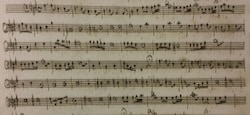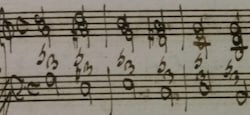The Stepwise Romanesca: The Basics
In this essay, I will discuss a voice-leading pattern that is known today as the Stepwise Romanesca. This schema occurs not only in many Baroque and galant compositions but also in many pedagogical assignments from the 17th and 18th centuries. In partimento methodology, this schema offers an alternative setting for a descending scalar passage set […]
The Stepwise Romanesca: The Basics Read More »





